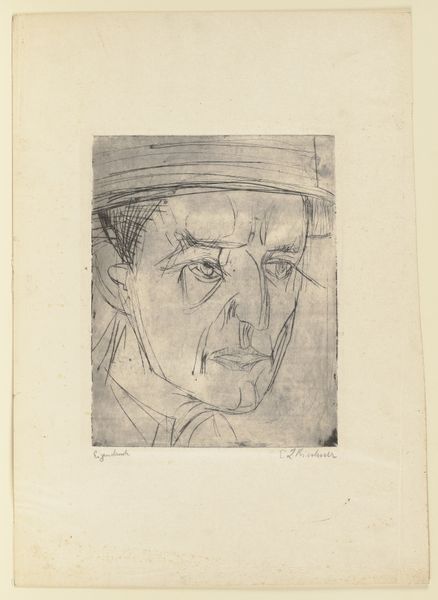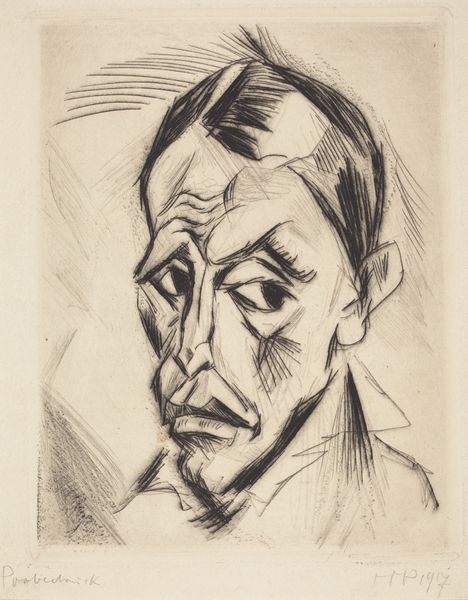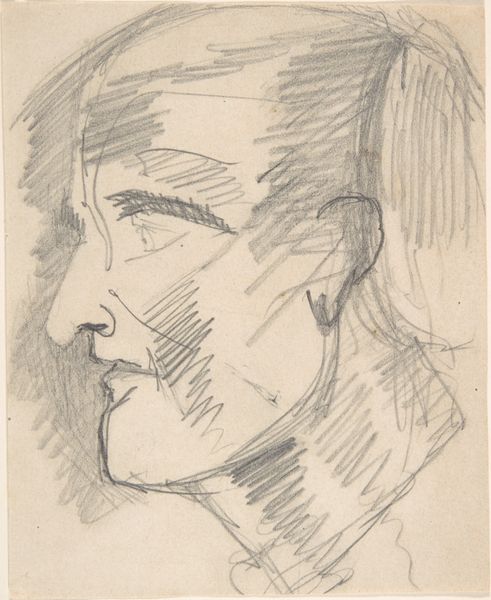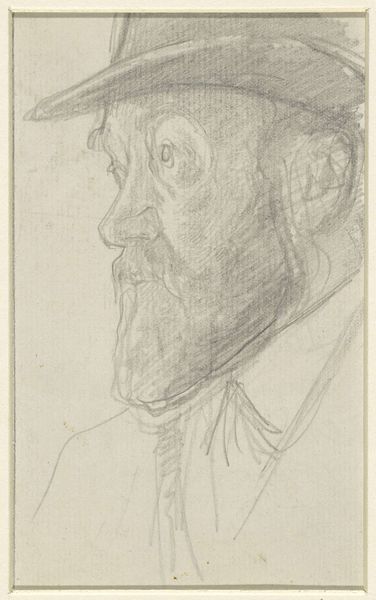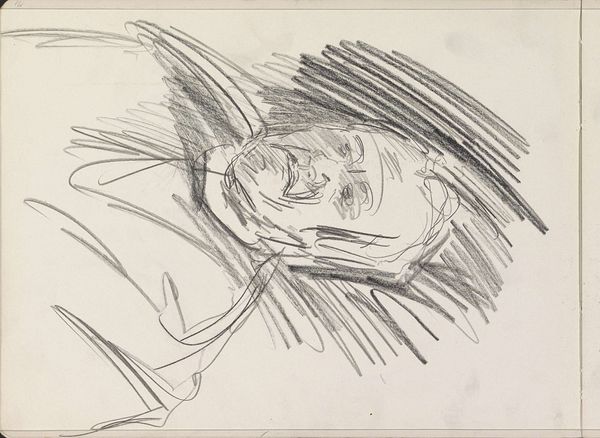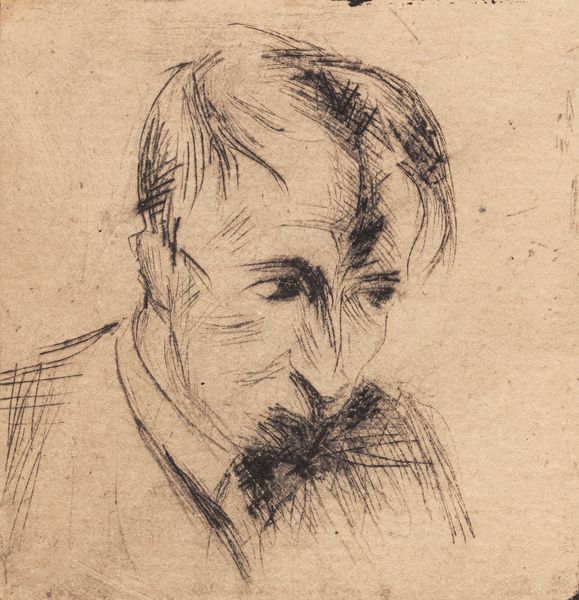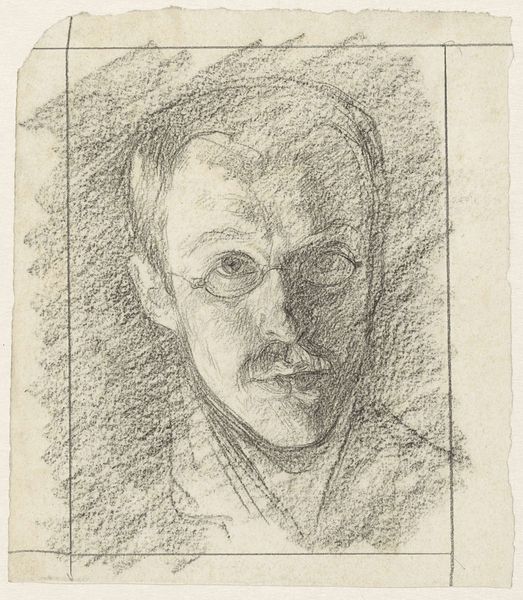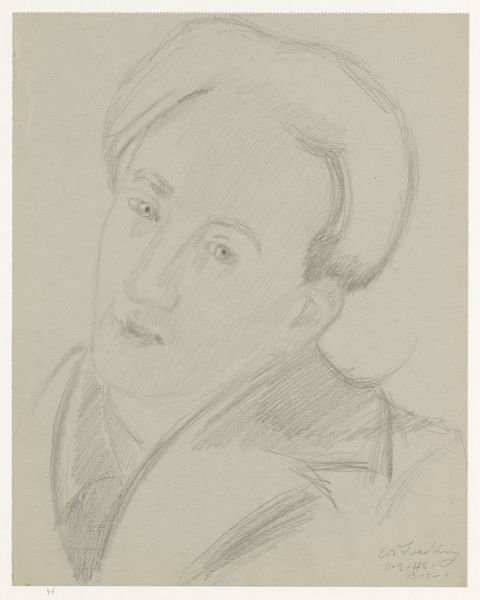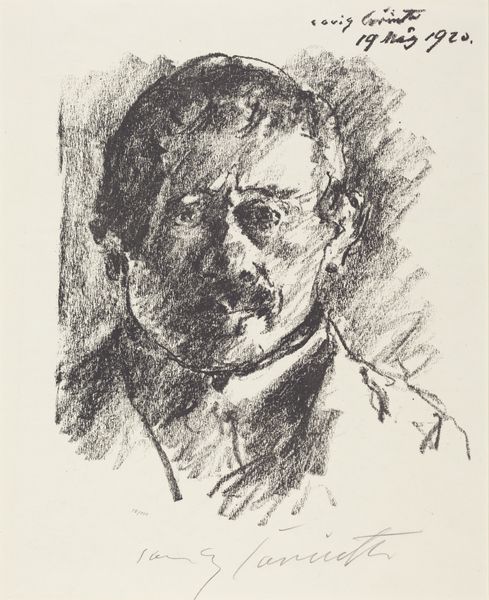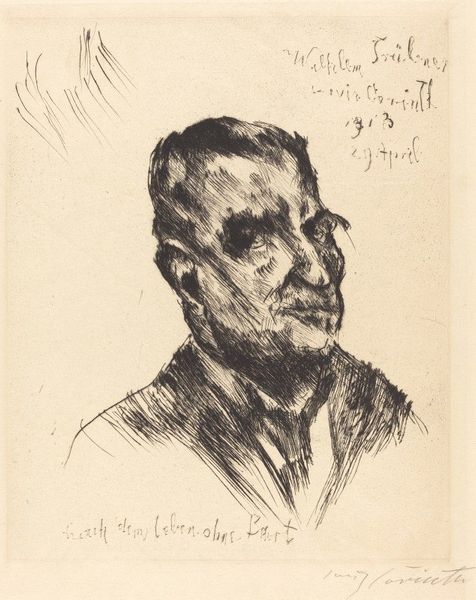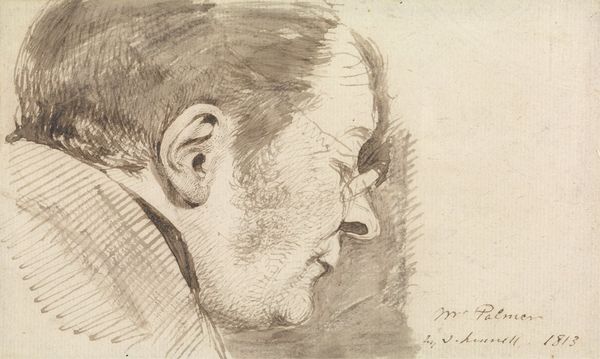
drawing, paper, graphite
#
portrait
#
drawing
#
paper
#
graphite
#
realism
Dimensions: height 212 mm, width 133 mm
Copyright: Rijks Museum: Open Domain
Curator: Let's delve into this striking drawing, "Portret van Richard Roland Holst," crafted by Jan Veth between 1874 and 1925. Editor: Immediately, I'm drawn to the intense contrast created by the graphite on paper. It feels almost sculptural, like he's been carved out of the darkness. Curator: Veth, a prominent figure in Dutch intellectual circles, created this portrait during a period where realism was becoming more psychological. Portraits weren't just about likeness, but capturing the sitter’s inner world, especially those prominent in the arts and social reform. Editor: You can see the intensity in Holst's gaze. I'm curious about the choice of graphite – it allows for this incredible range of tones and textures, from almost wispy suggestions to bold, definite lines that make his features stand out. What was the impact of access to specific types of graphite or paper? Did its cost or quality affect artistic creation at the time? Curator: Good questions! The availability of quality materials certainly played a role. Fine graphite allowed for detailed work that catered to the rising middle class who sought portraits as markers of status and refinement. Roland Holst himself, deeply involved in socialist ideals, was not from that social background, as Veth represents it here. Editor: And there’s an undeniable softness to the paper’s edge—its imperfections remind us that this is a material object, worked by an artisan and subjected to a certain context. How were portrait drawings like this consumed at the time? Curator: Portrait drawings were often commissioned by family or friends. They circulated among a specific social circle. Some, especially those of prominent figures like Holst, found their way into public collections. That’s how we see art history taking a hold of political significance in art reception, creating enduring social echoes. Editor: It brings a deeper connection to the hand of the artist, the choice of materials, and the ways that process shapes our viewing experience even today. Curator: Precisely. It underscores that our interpretation of an artwork evolves through shifting social currents. Editor: Reflecting on this, I see the drawing not only as a rendering of Holst, but also as a statement of identity—shaped by material conditions and circulated within layers of socio-cultural influence. Curator: Agreed. Veth’s portrait offers a tangible glimpse into the artistic, social, and political landscapes of its time.
Comments
No comments
Be the first to comment and join the conversation on the ultimate creative platform.
